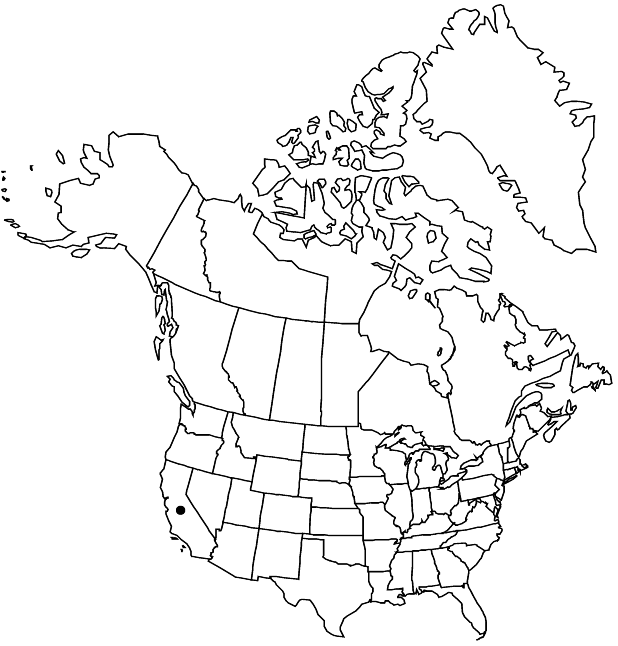Dudleya abramsii subsp. setchellii
J. Bot. Res. Inst. Texas 1: 1015. 2007 ,.
Caudices 2–5-branched, 1–2 cm diam. Leaves: rosettes 1–5; blade oblong-lanceolate or tapering from base, semiterete, 3–8 × 0.5–1 cm. Inflorescences: floral shoots 5–20 × 0.2–0.4 cm; proximalmost leaf blades 10–30 mm; branches 2–3, simple. Pedicels 1–5 mm. Flowers: calyx 4–5 × 2–5 mm; petals connate 1–1.5 mm, unmarked pale yellow, almost white, not red-lineolate, 7–12 × 2–3 mm, tips erect. 2n = 34.
Phenology: Flowering spring.
Habitat: Rocky outcrops in serpentine grassland
Elevation: 100-300 m
Distribution

Calif.
Discussion
Of conservation concern.
Subspecies setchellii is known from the Coyote Valley area, Santa Clara County; it is considered seriously threatened (California Native Plant Society, http://cnps.web.aplus.net/cgi-bin/inv/inventory.cgi). Although placed formerly with Dudleya cymosa, it is clearly closer to D. abramsii and especially to subsp. murina, which also grows on serpentine and at about the same elevation but some 200 kilometers to the south. Subspecies setchellii tends to be smaller, with petals unmarked and less sharply acute.
Selected References
None.